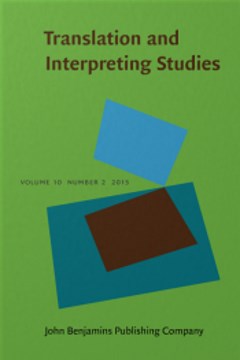Repository | Journal | Volume | Articles

(2015) Translation & Interpreting Studies 10 (2).
Since the mid-1950s much research has been carried out in the field of translation theories in Poland. Although the results that emerged were often of considerable interest, Polish translation theories are often ignored by experts in the West. This article investigates the Polish contribution to theoretical discussions of translation. Early contributions to the debate, in 1955, characterized by a “linguistic” approach, warned against theories limiting the “unit of translation” to single words, thus neglecting the “text.” Linguist O. A. Wojtasiewicz stressed the semiotic, psychological, and cultural nature of translation. Around the mid-1960s a group of scholars from the “Poznań School” focused on literary translation. They saw literary translation as a semiotic process and produced a theoretical and descriptive research that could be defined as “target-oriented.” Their methods are typified by the particular attention given to diachronic and reception perspectives. Since the mid-1970s, in marked opposition to the “predominant role of literary texts” in Polish translation studies, F. Grucza and scholars from Warsaw University (“Warsaw School”) favored other areas of research, such as oral translation and specialized translation and interpreting. From the research carried out in Warsaw, a new perspective opened up within the linguistic approach, resulting in a new definition of the equivalence based on cognitive and pragmatic factors. This line of research also involved cognitive linguistics, as of the 1990s the most noteworthy innovation in Polish translation studies. Since 1990 the research field has become more varied: there are now more translation study centers (Cracow, Łódź, Lublin, Gdańsk…), and the field of investigation has broadened, now following on the heels of Western debate, with which there is now more contact.
Publication details
Full citation:
Costantino, L. (2015). Translation theories in "the other Europe". Translation & Interpreting Studies 10 (2), pp. 243-262.
This document is unfortunately not available for download at the moment.



